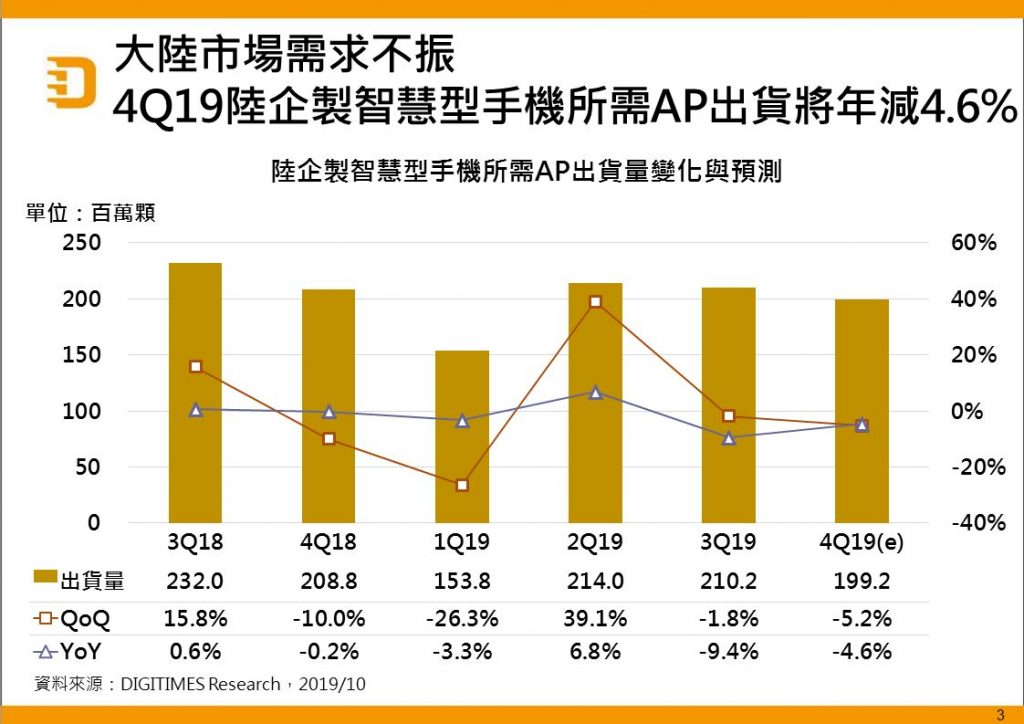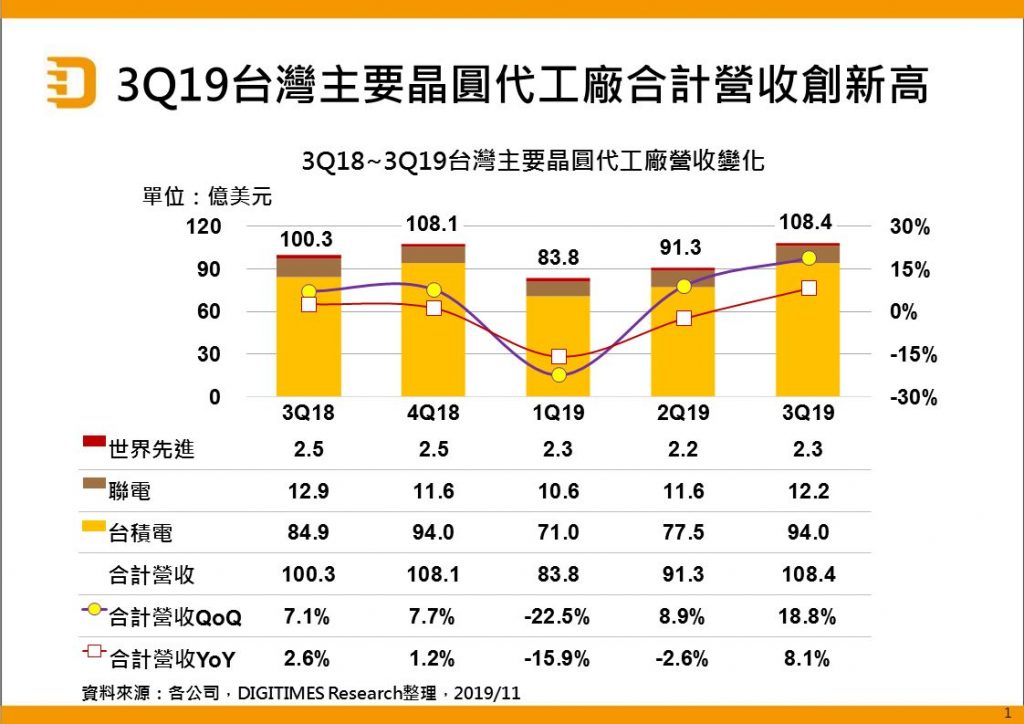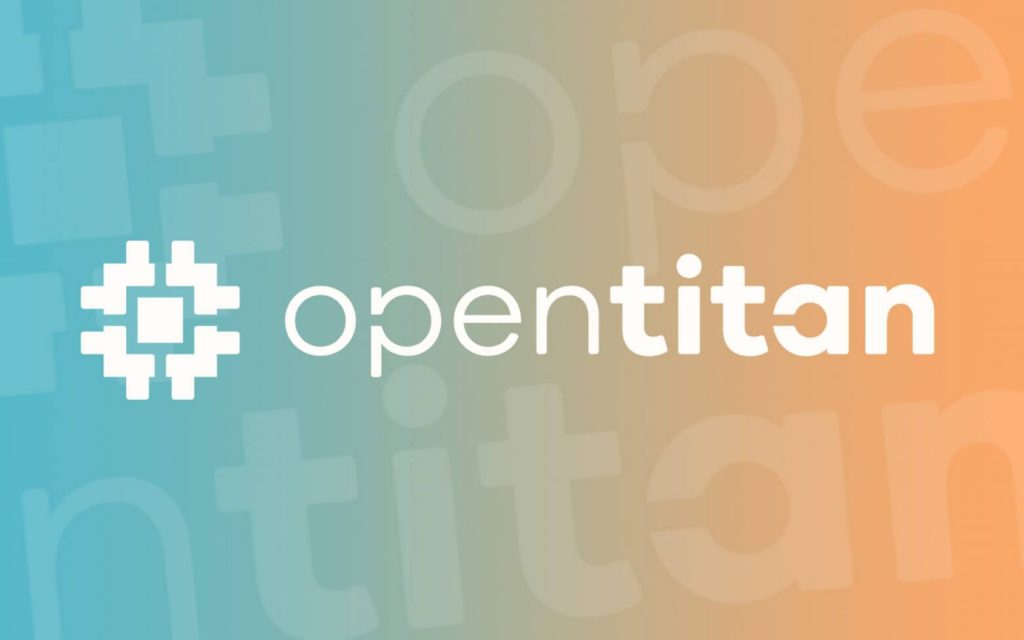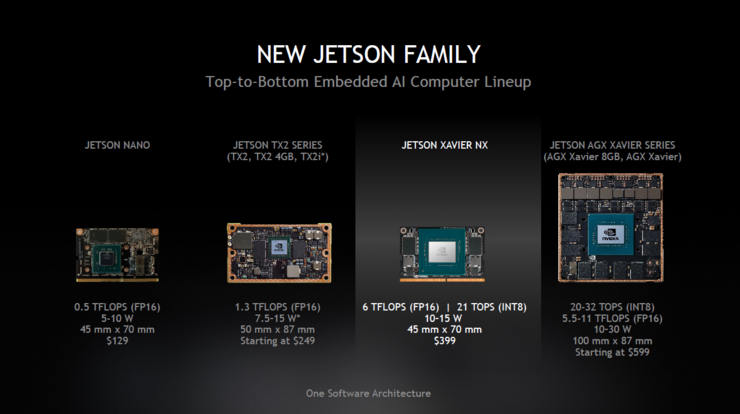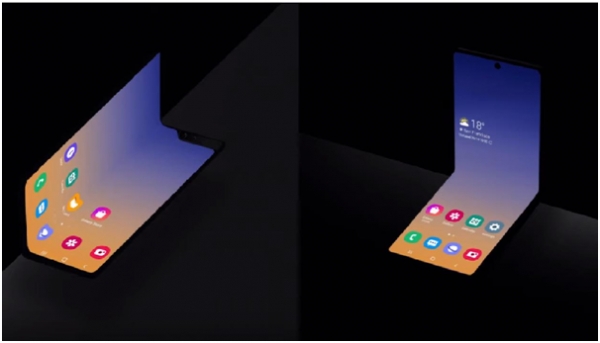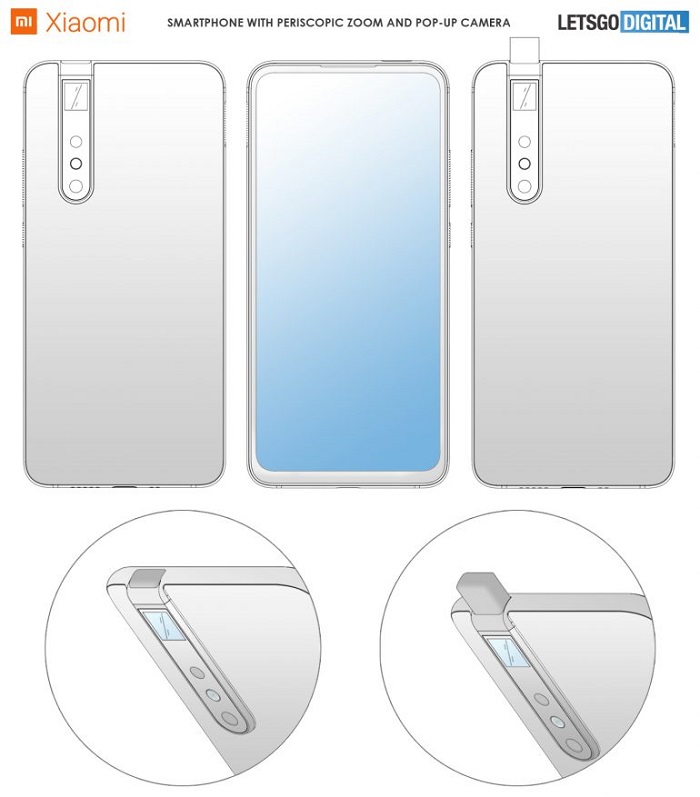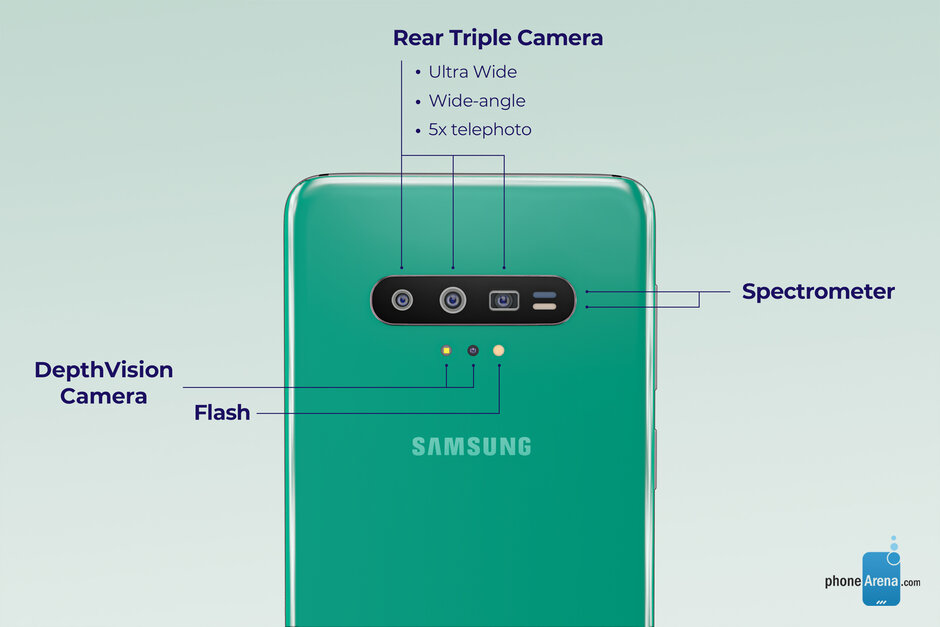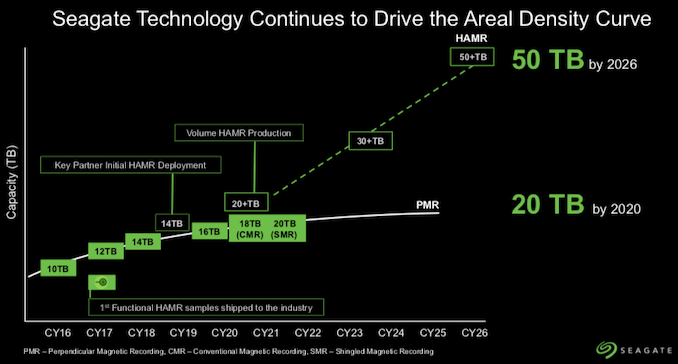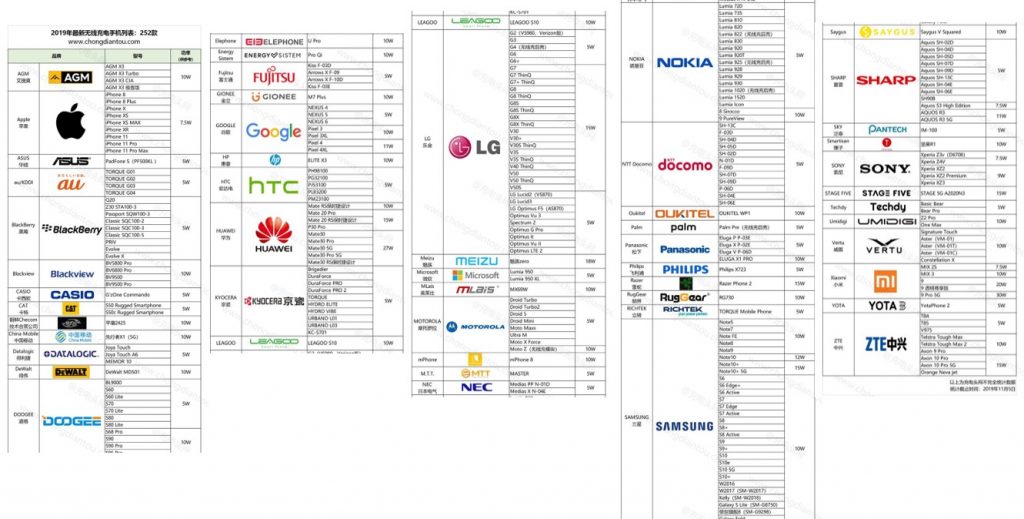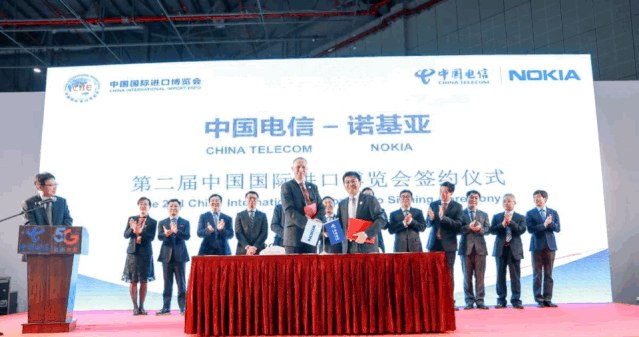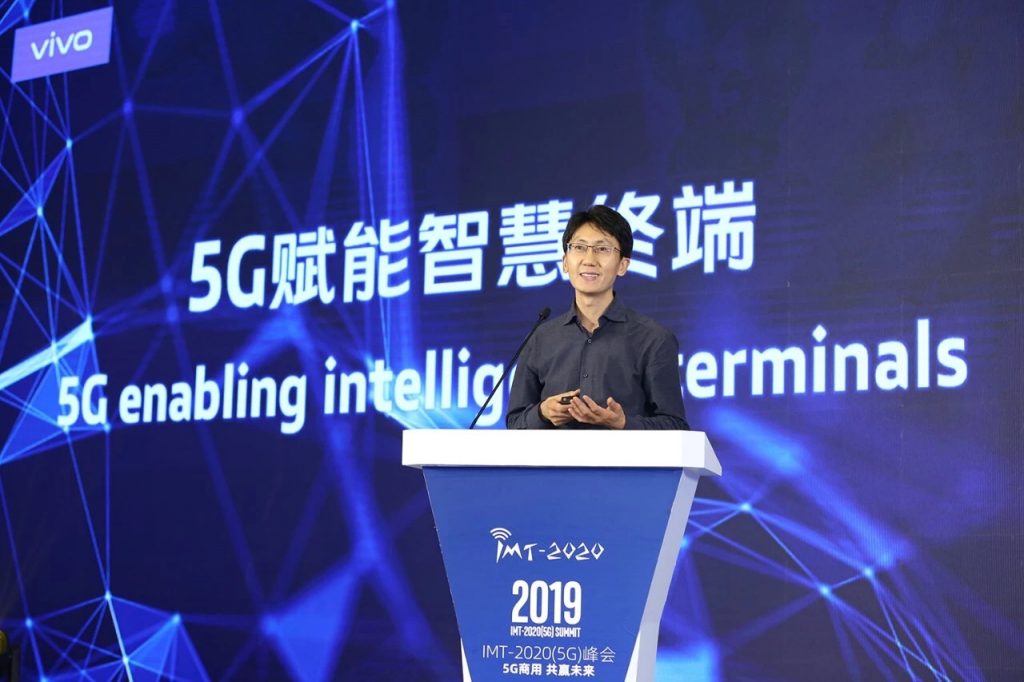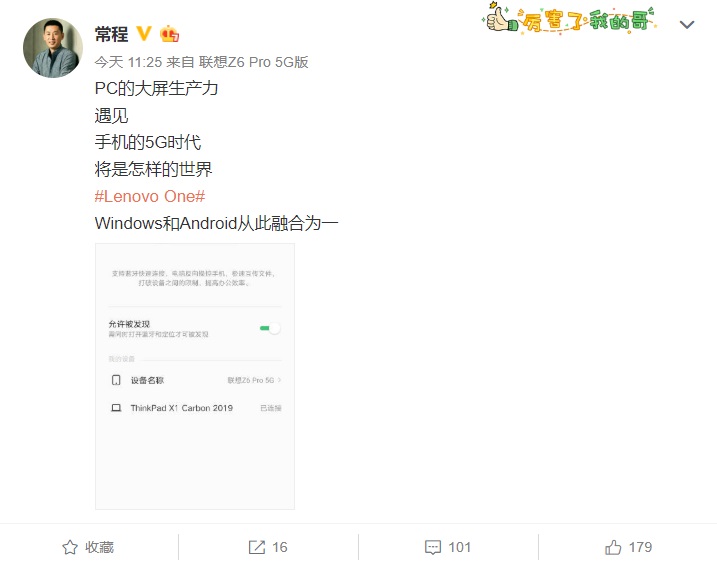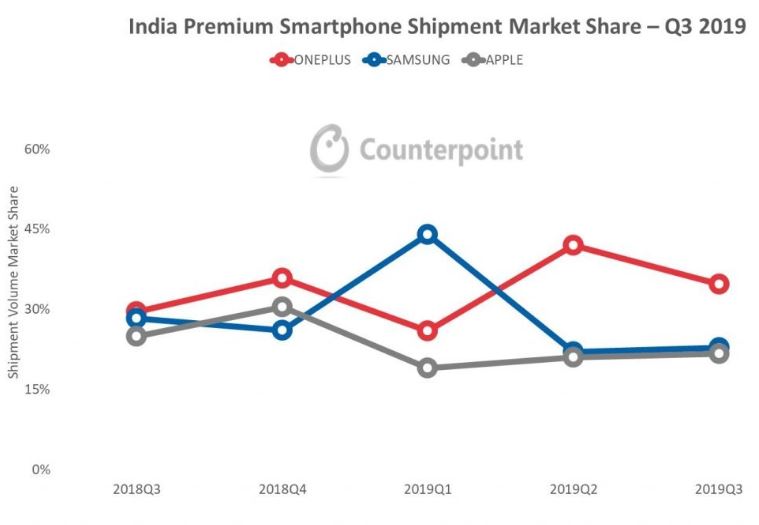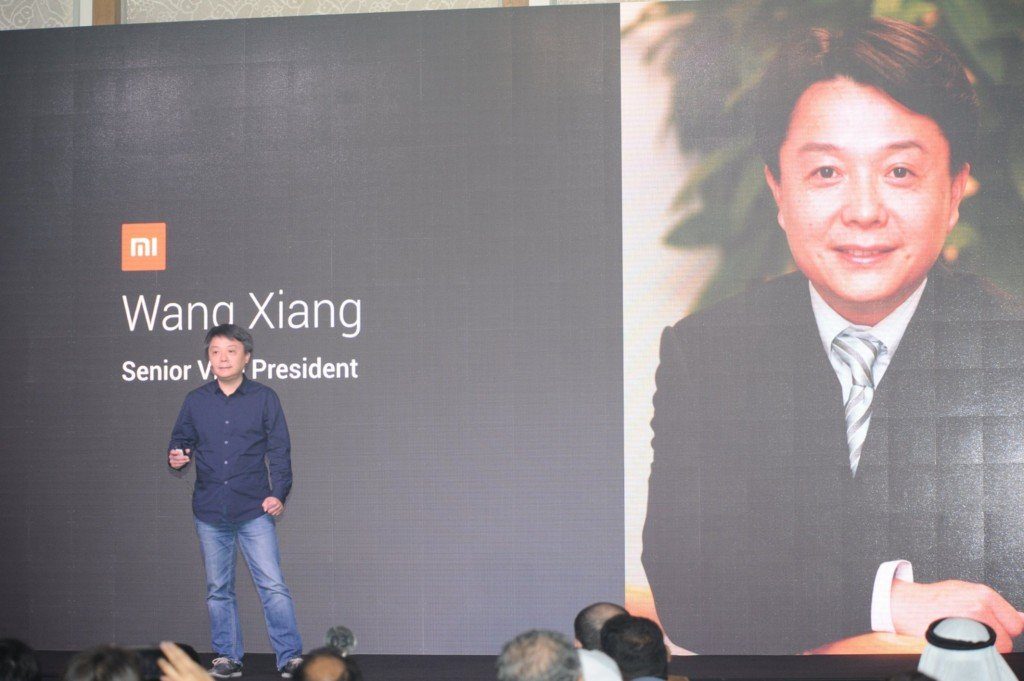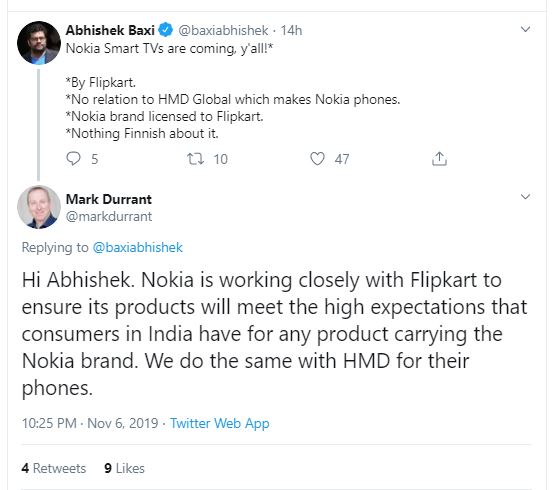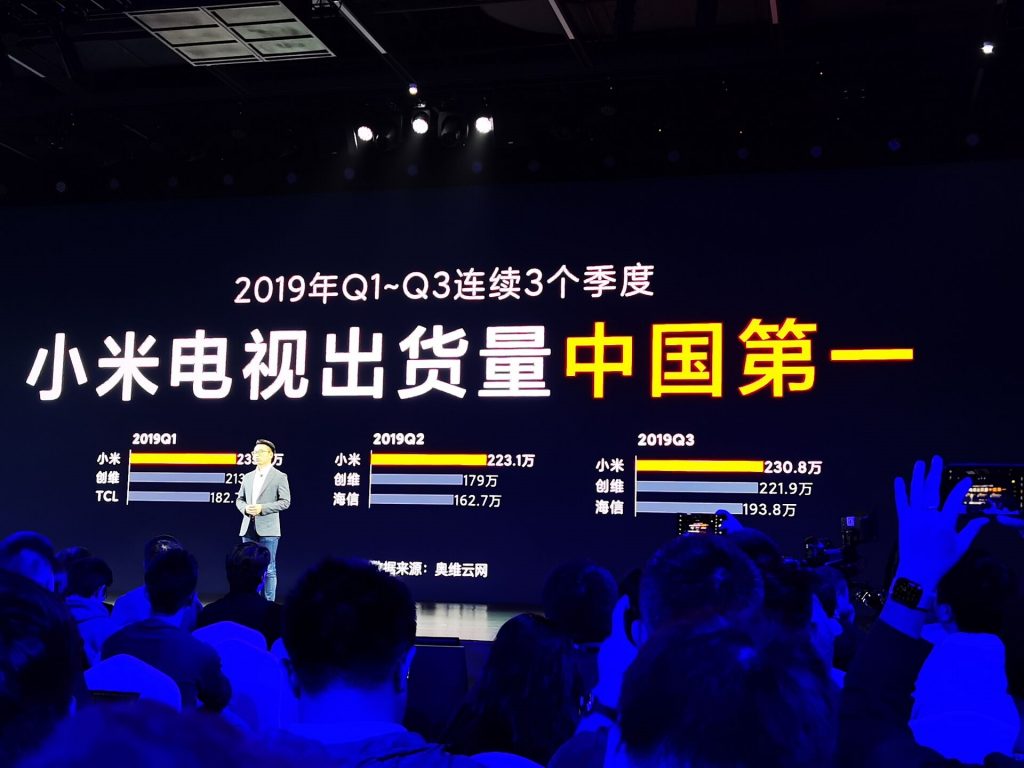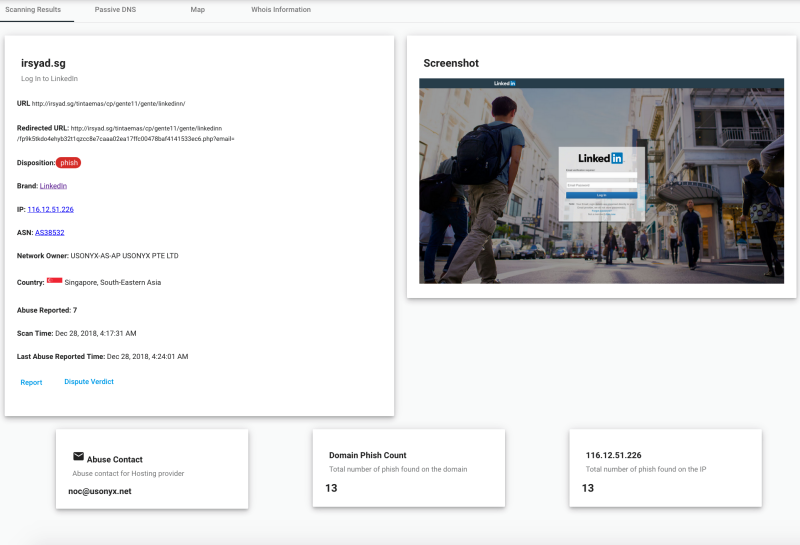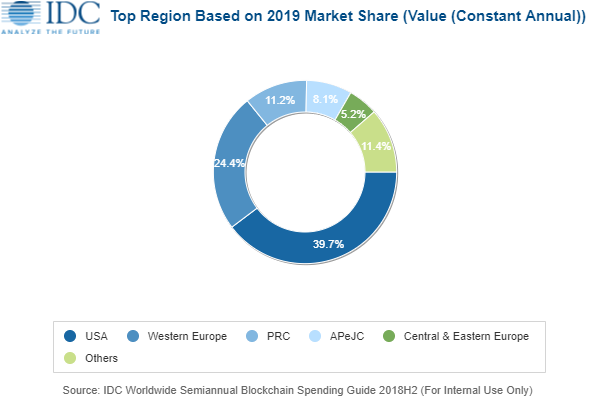
11-07: Nokia and China’s three major operators have signed a cooperation framework agreement of 2020; Xiaomi has confirmed that Xiaomi plans to enter Japan by 2020; etc.
Chipsets
Shipments of smartphone application processors (APs) to China are forecast to decline 4.6% on year in 3Q19, following a decline of 9.4% in 3Q18 to 210M units (excluding those used in ODM models made for Samsung), according to Digitimes Research. China’s handset vendors are also using more smartphone APs built using 7 / 8nm and 12nm processes, with the proportion of 7 / 8nm products against China’s total AP shipments climbing from 10% in the 2Q19 to 17% in 3Q19 and is likely to reach 17.8% in 4Q19. (Digitimes, press, Digitimes)
Intel CFO George Davis has stated that Intel’s 7nm silicon fabrication node is expected to begin mass-production of chips only by 2H21. Intel’s current product stack is moving on to the company’s 10nm silicon fabrication process in a phased manner. The company is allocating 10nm to mobile processors and enterprise processors, while brazening it out with 14nm on the client-desktop and HEDT platforms until they can build 10nm desktop parts. (Laoyaoba, My Drivers, Tech Powerup)
Taiwan’s wafer foundry industry performs well in 3Q19 with combined revenues of major vendors (including TSMC, UMC and VIS) reaching USD10.84B, a 18.8% increase, also exceeded the 4Q18 level, hitting a record high. Looking forward to 4Q19, even though the world’s advanced revenue outlook is relatively conservative, Taiwan’s wafer foundry industry revenue is expected to be new after 5G continues to help TSMC’s performance and UMC purchases and expands production capacity and shipments. (Digitimes)
Google has announced that it is partnering with several companies and non-profits to start a new initiative called OpenTitan. The goal is to develop open source secure chip design to be used in data centers and infrastructure. These designs can be independently verified and built upon to become even stronger. (CN Beta, Techspot, Google)
Nvidia has announced that it will provide United States Postal Service (USPS) with its AI tech. Nvidia claims its system will process package data 10-times faster and with higher accuracy. The system starts with high-performance servers powered by Nvidia V100 Tensor Core GPUs and deep learning software. The trained models are then deployed to Nvidia EGX edge computing systems at nearly 200 USPS facilities. (Engadget, CN Beta, ZDNet, Techspot, Nvidia)
Nvidia has announced Jetson Xavier NX, the world’s smallest, most advanced embedded AI supercomputer for autonomous robotics and edge computing devices. Jetson Xavier NX delivers up to 21 TOPS of compute under 15W of power, or up to 14 TOPS of compute under 10W. The Jetson Xavier NX module will be available in Mar 2020 for USD399 in volume. (CN Beta, AnandTech, Nvidia)
Untether AI, a Toronto-based startup that’s developing high-efficiency, high-performance chips for AI inferencing workloads, this morning announced that it has raised a USD20M series A round, following a small seed investment. (VentureBeat, Business Wire)
Qualcomm has revealed that it expects some 200M smartphones will rely on the speedy wireless technology in 2020, which may imply that Apple’s 5G iPhone is coming in 2020. Qualcomm CFO Akash Palkhiwala said 2020 will hold “two inflection points” for 5G chips. (Laoyaoba, Apple Insider, My Drivers, Reuters)
Touch Display
Ko Dong-jin, head of the IM Business Division at Samsung Electronics has revealed that the company will increase foldable phone production in 2020. Referring to the new foldable phone model, Ko said, it is not time to disclose when they will release the new product to the market. (CN Beta, Business Korea)
Camera
Xiaomi has filed a design patent with Hague International Design System. The rear camera module is arranged in turn-up position, in the same column as the pop-up camera, and there are several other small round holes visible—this may be an additional camera sensor (such as ToF / depth perception/ macro), may also be flash. (CN Beta, LetsGoDigital, GizChina)
Samsung has reportedly developed Galaxy S11’s rear camera setup under the codename “Hubble”. The camera may feature an all-new periscope-like lens that supports 5x optical zoom. Samsung is allegedly also preparing a new software feature that rivals Apple’s Deep Fusion. (CN Beta, Phone Arena, Galaxy Club)
Memory
Seagate has clarified its high-capacity HDD roadmap. The company is on track to ship its first commercial HAMR-based hard drives in 2020, but only in 2H20. Before that, Seagate intends to ship its 18TB HDDs. It is expected that Seagate’s 18 TB hard drive will be based on the same nine-platter platform that is already used for the company’s Exos 16TB HDD. (CN Beta, My Drivers, AnandTech)
Battery
According to Chongdiantou, up to Nov 2019, the latest mobile phones that support wireless charging have a total of 252 models. Among them, Xiaomi 9 Pro 5G version achieves the highest power of 30W, Huawei Mate 30 series 27W second, and the most models are LG, a total of 32 models. (My Drivers, Chongdiantou)
Connectivity
Nokia and China’s three major operators have signed a cooperation framework agreement of 2020, with a total value of CNY15.7B. According to the agreement, Nokia will focus on providing more extensive and professional technical service support to the three major operators in the construction of end-to-end communication networks and services, digital transformation and business development, and continuously meet their growing business needs. (Laoyaoba, QQ, Jiemian)
Phone
General Manager of vivo Communications Research Institute, Qin Fei claims that the company has plans to launch at least 5 5G devices in 2020, with a bigger focus on the low cost and mid-range market. (Gizmo China, IT Home)
Lenovo SVP Chang Cheng has indicated that “Lenovo One” will merge the smartphone-friendly Android with laptop-friendly Windows. Lenovo has claimed that “Lenovo One” can break restrictions and achieve cross-device connectivity. It can also achieve mobile screen projection, one-button fast transmission and other functions. (GizChina, IT Home, CN Beta)
Huawei consumer business CEO Richard yu has revealed that Mate 20 series has broken 17M units shipment while P30 series has broken 20M units shipment. (Gizmo China, IT Home)
Realme has announced that it sold 5.2M smartphones in India during the festive season, starting on 30 Sept 2019 and ending on 31 Oct 2019. It has seen a growth of over 160% since last year and became the top-selling smartphone brand in India on Flipkart during the aforementioned period. (GSM Arena, NDTV, India Today, My Drivers)
According to Counterpoint Research, India’s smartphone shipments in the premium segment (≥INR30,000 or roughly ≥USD493 retail price) grew 66% YoY to reach an all-time record high in 3Q19. The growth in the segment was driven by new launches, aggressive offers, and channel push, ahead of the crucial festive season. OnePlus (35%) led the premium market segment followed by Samsung (23%) and Apple (22%). OnePlus grew faster (+95%) than the segment (+66%) and remained the fastest-growing brand. (Counterpoint Research, GSM Arena)
Xiaomi’s Head of International Operations has confirmed that Xiaomi plans to enter Japan by 2020. Xiaomi plans to introduce its extensive range of smartphones and wearable devices by 2020. (Gizmo China, Asia Nikkei, 36Kr, Sina)
Xiaomi Mi Note 10 is announced – 6.47” 1080×2340 FHD+ Super AMOLED, Qualcomm Snapdragon 730G, rear penta 108MP-5MP telephoto OIS-12MP telephoto OIS-20MP ultrawide-2MP macro + front 32MP, 6+128 / 8+256GB, Android 9.0, under display fingerprint, 5260mah 30W, EUR549 / EUR649 (Pro). (Android Authority, Android Central, GSM Arena)
Augmented / Virtual Reality
Sturfee’s City AR system begins by building a 3D digital mesh model of a city, based on high-resolution 2D satellite images of ground data such as building geometries, trees and roads. Each location within that model is in turn assigned a “visual fingerprint”, resulting in a machine-readable “fingerprint map”. (CN Beta, New Atlas)
Home
Flipkart has announced that it has entered into a strategic partnership with Nokia to launch Nokia-branded Smart TVs in India. This will mark Nokia’s entry into the television segment in India. (Gizmo China, India Today, CN Beta)
Xiaomi TV general manager Li Xiaoshuang has announced that over the last 3 quarters (1Q19-3Q19), Xiaomi TV has shipped about 2.3M units per quarter. (GizChina, My Drivers)
Xiaomi Mi TV 5 and Mi TV 5 Pro with 3 sizes, namely 55”, 65” and 75”, are officially launched in China. The key highlights of the Mi TV 5 Pro is its Quantum Dot display, HDR 10+, supporting MEMC motion compensation, and 8K video. The Mi TV 5 is priced at CNY2,999-7,999 (USD428-1,142) Mi TV 5 Pro is priced at CNY3,699-9,999 (USD537-1,425). (GSM Arena, Weibo, GizChina)
Robotics
Amazon has announced a plan today to build a USD40M, 350kft2 robotics innovation hub in Westborough, Mass. The new facility will bring 200 technology and advanced manufacturing jobs when it opens in 2021. Amazon bought Kiva Systems, a company that is developing order fulfillment robots, in 2012 for USD775M, and renamed the company Amazon Robotics. (TechCrunch, Supply Chain Dive, Seeking Alpha, Amazon, Sohu)
Artificial Intelligence
Neural Magic, which figures out a way to run machine learning models on commodity CPUs, has announced that it has raised a USD15M seed investment led by Comcast Ventures with participation from NEA, Andreessen Horowitz, Pillar VC, and Amdocs Ventures, which brings its total raised to USD20M following a USD5M pre-seed round. (VentureBeat, Sohu, TechCrunch)
RedMarlin, a startup using AI to fight counterfeiting and fraud, has announced that it has raised USD10M in series A funding co-led by Thomvest Ventures and Crosslink Capital, with participation from Cyber Mentor Fund, Nexxus Venture Partners, and Rain Capital. The natural language understanding and computer vision algorithms underlying RedMarlin’s platform can detect an instance of brand hijacking on a webpage, email, or social network in as little as milliseconds and can understand intent from text snippets alone. (VentureBeat, PR Newswire)
Fintech
According to IDC’s forecast on China’s blockchain spending, forecasting that China’s spending on blockchain technology will reach USD2B by 2023, which represents a CAGR of 65.7%. During the forecast period, which ranges from 2018 to 2023, the United States will still account for the most spending on blockchain at 39%, with Western Europe second and China third. (CN Beta, IDC, Pandaily)
